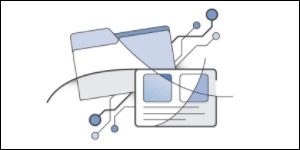AWS Partner Network (APN) Blog
Coming Soon: SLES for SAP in AWS Marketplace
By Sabari Radhkrishnan, Partner Solutions Architect at AWS focused on SAP
 Amazon Web Services (AWS) and SUSE have been working together for years to bring SUSE Linux Enterprise Server (SLES) to our joint SAP customers. Since 2012, when AWS first certified its platform for SAP workloads, including SAP HANA One, customers have been using the SLES operating system to run their SAP applications on AWS.
Amazon Web Services (AWS) and SUSE have been working together for years to bring SUSE Linux Enterprise Server (SLES) to our joint SAP customers. Since 2012, when AWS first certified its platform for SAP workloads, including SAP HANA One, customers have been using the SLES operating system to run their SAP applications on AWS.
When AWS certified its instances for SAP HANA in 2014, customers started using SLES for their SAP HANA deployments on AWS as well. In 2015, SLES for SAP was made available in AWS through SUSE’s bring-your-own-subscription program; and in 2016, SLES for SAP became available in AWS Marketplace as an on-demand image, so our existing and new customers could easily get started with their mission-critical SAP workloads.
As part of our continuing efforts to provide our joint SAP customers with the best experience, we are pleased to announce today that SLES for SAP will become available in AWS Marketplace as an AWS offering in Q4 2017. This will be the second joint listing from AWS and SUSE after SLES, which was launched almost seven years ago. With the release of X1 and X1e instances, which are purpose-built for in-memory workloads such as SAP HANA, we are seeing that more customers are choosing to run SAP workloads in development, test, and production on AWS.
The new SLES for SAP listing will make it easier for customers to run SAP workloads on AWS, because they will receive joint support from AWS and SUSE, and the new offering will be priced competitively. SUSE and AWS will continue to work together to enhance and optimize the OS for SAP workloads on AWS.
SLES for SAP includes the High Availability Extension (HAE), which allows SAP HANA instances to seamlessly fail over between Availability Zones. The software also includes other enhancements such as page cache management and kernel settings that are optimized for SAP workloads. In addition, SLES for SAP images carry extended service pack support so customers can run the next-to-last service pack for up to 18 months. You can find more details about the benefits of using SLES for SAP on the SUSE website.
Customers can easily get started with SLES for SAP for their SAP HANA workloads by using the AWS Quick Start for SAP HANA. This Quick Start helps provision and configure the infrastructure required to deploy SAP HANA in less than an hour, following best practices from AWS, SAP, and SUSE.
Customers can continue to leverage SUSE’s bring-your-own-subscription program to use their existing subscriptions to run their SAP workloads on AWS; see aws.amazon.com/suse for details. To learn more about running SAP on AWS, check out http://aws.amazon.com/sap.
To learn more about this announcement, see the SUSE blog.
If you’re at SUSECON, be sure to check out these SUSE and AWS sessions:
- BOV117851 – SUSE on Amazon Web Services: Join this discussion about the current offerings and new product developments on the AWS platform (CaaSP, ENA, SLES for SAP). (1-hour business overview)
- CAS117855 – Running SAP on AWS: Fitch Ratings Success Story: Join us for this talk as we discuss two case studies on SLES for SAP with systems integration partner Protera.
- SPO140247 – Best practices for SLES for SAP on AWS: Managing on-premises infrastructure for SAP workloads is challenging and costly. Learn how to bring agility, elasticity, cost savings, and scalability to new and existing SAP workloads with X1 instances from AWS.
- TUT126536 – Orchestrating GPU Workloads with SUSE CaaS Platform and Amazon Web Services: With the advent of public cloud instances that support Graphics Processing Units (GPUs), the need has arisen for orchestration of workloads that can leverage these coprocessors.